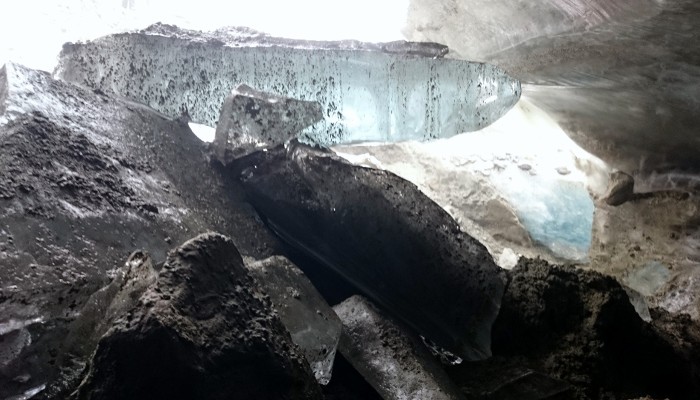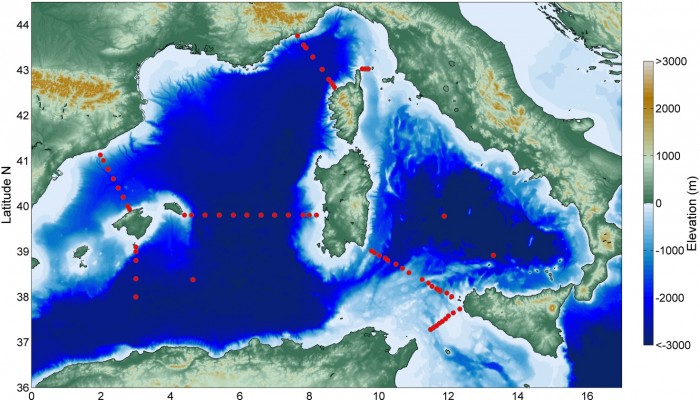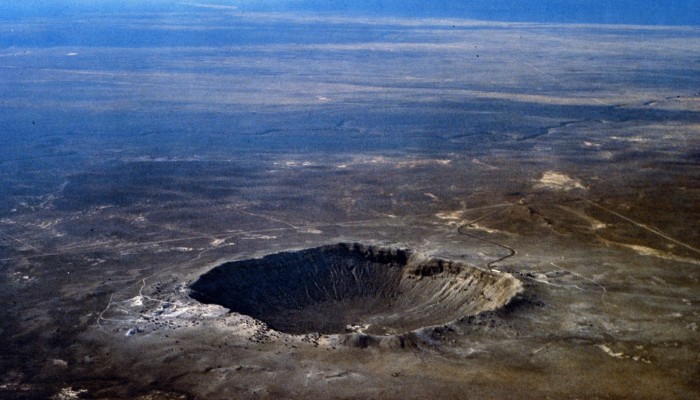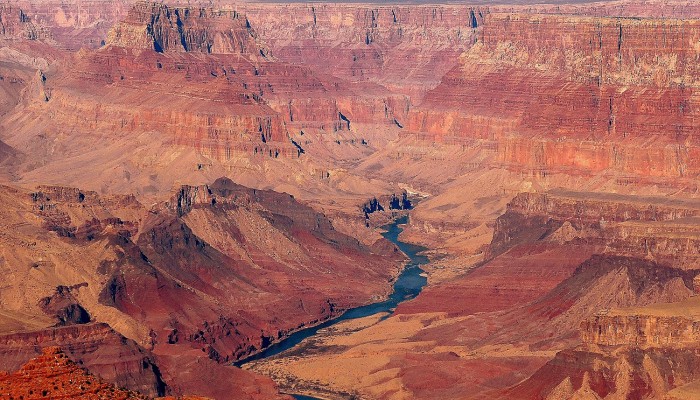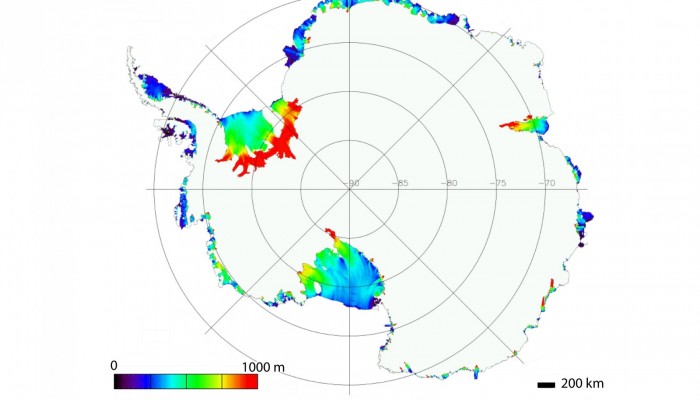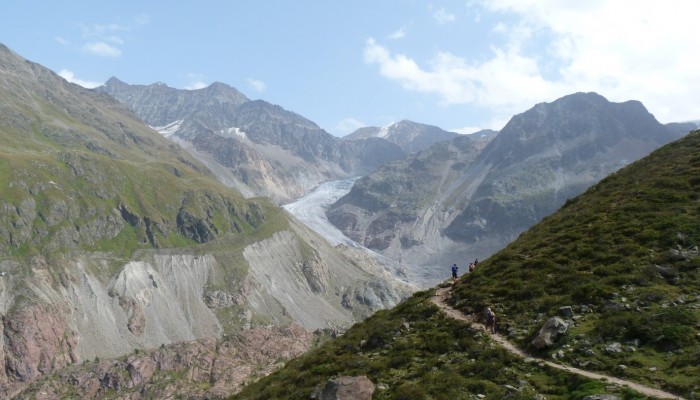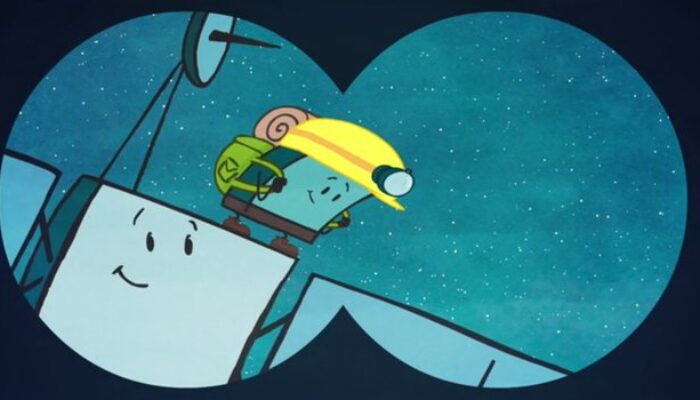What is happening under a glacier? This is a difficult questions to answer as accessing the glacier bed is usually not that easy. Here, we are getting a rare glimpse of the different processes and materials that are often found at the ice-bed interface. The photograph shows both sediments and hard rock, clear ice and dirty ice, and of course flowing water. No wonder these processes are complicated ...[Read More]
GeoLog
Cruising the Mediterranean: a first-hand account of a month at sea – Part 1
Simona Aracri, a PhD student at University of Southampton, spent a month aboard the research vessel, R/V Minerva Uno, cruising the Mediterranean Sea. Simona and the team of scientists aboard the boat documented their experiences via blog. Over the coming weeks we’ll feature a few of the posts the team shared over the one month voyage: you can expect to find out what life aboard a large research ve ...[Read More]
An Atom's-Eye View of the Planet
Meteorite impact turns silica into stishovite in a billionth of a second
The Barringer meteor crater is an iconic Arizona landmark, more than 1km wide and 170 metres deep, left behind by a massive 300,000 tonne meteorite that hit Earth 50,000 years ago with a force equivalent to a ten megaton nuclear bomb. The forces unleashed by such an impact are hard to comprehend, but a team of Stanford scientists has recreated the conditions experienced during the first billionths ...[Read More]
GeoLog
Imaggeo on Mondays: The Grand Canyon and celebrating Earth Science Week
Today marks the start of Earth Science Week – a yearly international event which aims to help the public gain a better understanding and appreciation for the Earth Sciences. The event is promoted by the American Geosciences Institute and the Geological Society of London, amongst others, so be sure to head to their websites to find out more. Our Imaggeo on Monday’s image celebrates Earth Science We ...[Read More]
Seismology
INVITATION: Special Issue on Georisks in the Mediterranean
A special issue themed “Georisks in the Mediterranean and their Mitigation” is being compiled to be published in Natural Hazards (Springer) (Impact Factor of 1.719) http://www.springer.com/earth+sciences+and+geography/natural+hazards/journal/11069 Manuscripts containing original research or reviews are welcome for submission. They will be accepted or rejected after a peer review process. Topics co ...[Read More]
Geology Jenga
An Andy Warhol Moment for Liverpool’s Geomagnetism Group – dating the formation of the Earth’s Inner core
This week, my PhD supervisor, Andy Biggin, had a paper out in Nature. The findings of this new research point towards the Earth’s inner core being older than we’d previously thought. Recent estimates, suggest that the Earth’s solid inner core started forming between half a billion and one billion years ago. However, Andy’s (and co-workers) new measurements of ancient rocks as the ...[Read More]
Cryospheric Sciences
Image of the Week: Antarctic ice-shelf thickness
Thickness of floating ice shelves in Antarctica. Ice thickness is greatest close to the grounding line where it can reach 1000 meters or more (red). Away from the grounding line, the ice rapidly thins to reach a few hundreds of meters at the calving front. Ice thickness varies greatly from one ice shelf to another. Within ice shelves, “streams of ice” can be spotted originating from in ...[Read More]
Geomorphology
Report from the Summer School on Geomorphology in the Kaunertal Valley, Austria, 31st August – 6th September 2015
Written by Ciara Fleming ( University College Dublin) The focus of this Summer School was ‘Sediment dynamics in high mountain environments’ and as suggested by this title, the location did not disappoint. For the week-long school we were based in Feichten im Kaunertal (1273m a.s.l.), a perfectly-formed Alpine village in the Province of Tyrol, Austria. The school brought together a diverse group of ...[Read More]
GeoLog
Apply now to take part in the 2016 GIFT workshop!
The General Assembly is not only for researchers but for teachers and educators with an interest in the geosciences also. Every year the Geosciences Information For Teachers (GIFT) is organised by the EGU Committee on Education to bring first class science closer to primary and high school teachers. The topic of the 2016 edition of GIFT is ‘The Solar System and beyond’. This year’s workshop is co- ...[Read More]
GeoSphere
Geology Photo of the Week #48
This edition of the photo of the approximate week (plus or minus 1 – sorry for my tardiness) is very cool in that it shows when earth processes that are invisible suddenly become very visible. In this case the submarine volcano, El Hierro, is erupting and instead of the usual bursting lava and fireworks display the only evidence of the turmoil going on is this discolouration at the oceanR ...[Read More]

